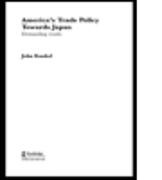Read more
List of contents
1. Introduction2. Explaing US Trade Policy: A State-Society Approach3. An American Trade Policy Regime Crisis4. Hardliners Versus Free Traders5. The Semiconductor Agreement: A Hardline Landmark6. Reagan, Bush and Selective Demands for Results7. The Hardliners Advance8. Free Traders and Japan's 'Structural Impediments9. The Revisionist Moment with a Hardliner-in-Chief10. The Eclipse of the Japan Problem
About the author
John Kunkel is an international trade consultant currently based in Rome. He has worked as an advisor on trade policy to the Australian government and as a consultant to the OECD.
Summary
In a few years, the United States has gone from worrying about Japan's economic might to worrying about its meltdown. The rise and fall of America's 'results-oriented' trade policy towards Japan captures this turnaround.John Kunkel traces this Japan policy to a crisis in the institutions, laws and norms of the US trade policy regime in the first half of the 1980s. This arose from the erosion of America's post-war international economic dominance (especially vis--vis Japan) and the unintended consequences of Reaganomics. The crisis in turn led to the progressive ascendancy of a coalition of 'hardliners' over 'free traders' after 1985.Kunkel combines research in economics, politics and history - including interviews with key policy-makers - to illuminate this important case study of American trade policy. His book offers theoretical insights and practical lessons on the forces shaping US trade policy at the start of the twenty-first century.

